1961–1970
Establishing the Decade
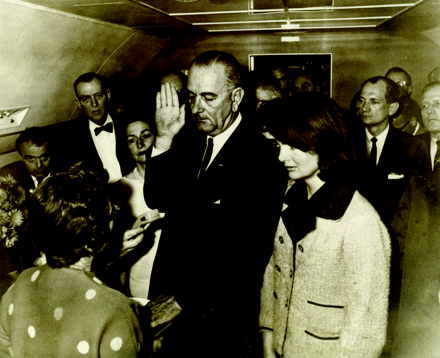
Drugs, murder, war, computers, and outer space adventures the elements of a bestselling novel or blockbuster movie were the rotating news headlines of the 1960s. A handsome young World War II veteran from a wealthy Massachusetts family began his term as US President in 1961. John Fitzgerald Kennedy continued the anticommunist policies that had begun in previous administrations, and he strengthened American military forces in embattled South Vietnam. At home, Kennedy dealt with the Civil Rights movement as blacks, tired of Jim Crow laws, began to protest openly and demand equal treatment in society. The nation was saddened when Kennedy was assassinated, in November, 1963, before finishing his first term. Vice President Lyndon B. Johnson succeeded him and orchestrated the direct involvement of US troops in the Vietnam War. Johnson also signed legislation that granted black Americans unprecedented rights and protection under federal law. By the end of the decade, Kennedy’s fate would be shared by Civil Rights leaders Malcolm X, Martin Luther King, Jr., and by Kennedy’s own brother, Attorney General Robert Kennedy.
Higher Ground

The Vietnam War met with resistance among many young Americans, who opposed established societal and government institutions, including the draft system of military service. Generally known as hippies, many such youths embraced free expression and experimentation, often using psychedelic drugs such as marijuana and LSD for recreational and medicinal purposes. The surprisingly peaceful Woodstock Festival of 1969 lured 500,000 enthusiastic young people to a stage that featured Santana, Janis Joplin, Jimi Hendrix, The Who, and other artists who are now legendary. The mechanism of action of LSD, a serotonin receptor antagonist, had been elucidated, a little over a decade before Woodstock, by Sir John Henry Gaddum. Gaddum, who died in 1965 and had once worked under the tutelage of Sir Henry Dale, is also known for writing the mathematical equation describing the competitive binding of two ligands to a single receptor.
Getting Hip
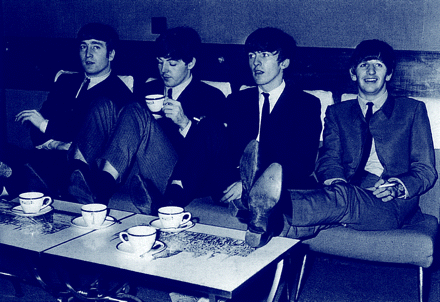
The rock n’ roll sound popularized by Elvis and others in the 1950s traveled across the Atlantic Ocean and inspired young artists in Great Britain. These artists, who previously had not found a large market in the United States, embraced the new music, fusing it with British influences. By the 1960s, the new sound was carried back across the Atlantic, by such artists as the Beatles and the Rolling Stones, and dominated American charts with hit after hit. Rock n’ roll also got a makeover from within, as a recording company from Detroit, called Motown, successfully marketed black solo artists and singing groups for the first time to mass audiences. Motown superstars included the Supremes, the Miracles, and Marvin Gaye.
Leaps and Bound
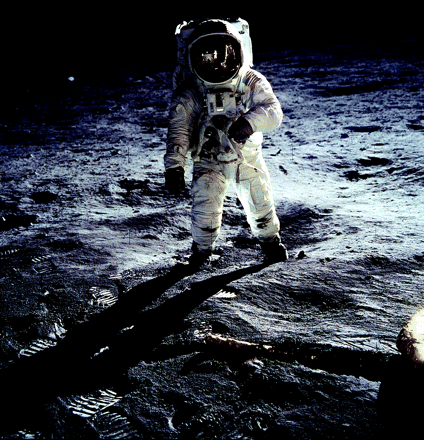
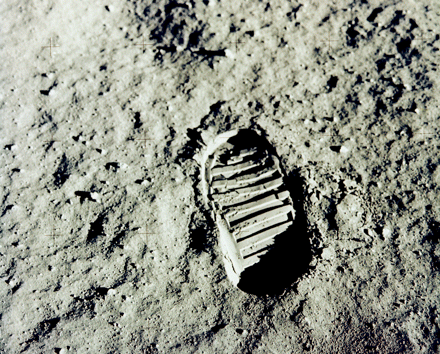
The Space Race that had begun in the 1950s, and in which the Soviets had gained early ground, became a major American endeavor, focusing US determination to lead the world in science and technology. Although the Soviets sent the first human, Yuri Gagarin, into orbit in 1961 on the spacecraft Vostok 1, it was the American John Glenn who made the first successful full orbit around the earth in 1962. With both the Soviets and Americans in space, President Kennedy argued that the only way for the US to claim technological supremacy (and to justify the astronomical costs of NASA) would be to place a human being on the moon, a surface whose characteristics had previously only been photographed by unmanned spacecraft. On July 20, 1969, when Neil Armstrong set foot on the moon, American imaginations were captured, and suddenly, technology seemed boundless. The moon landing brought an eerie reality to what had been science fiction. (Ironically, the popular television series, Star Trek, aired its last episode the month before the moon landing.) For pharmacologists, the end of the 60s brought another great accomplishment. Julius Axelrod, Bernard Katz, and Ulf von Euler won the Nobel Prize for their work describing the mechanisms of storage, release, and inactivation of neurotransmitters at synaptic terminals.
Healing Hearts
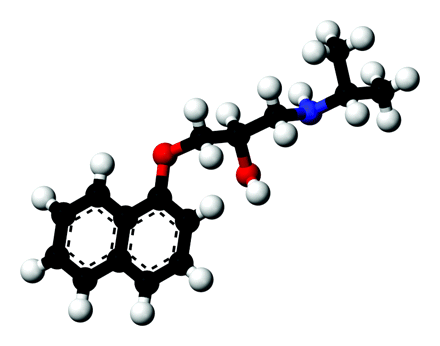
Like music, politics, and the perceived limits of human achievement in general, medicine in the 1960s changed dramatically and permanently. Treatment of angina pectoris, which had through the 1950s utilized agents, like nitroglycerin, to increase blood flow and oxygen delivery to the heart, was soon to be approached from the opposite direction. James W. Black, a Scottish pharmacologist, proposed to treat angina pectoris by pharmacologically reducing pulse rate so as to reduce the heart’s demand for oxygen. Black sought to develop an appropriate drug agent based on Raymond Ahlquist’s theory that two classes (α and β) of adrenergic receptors exist to mediate diverse responses to catecholamines. Using guinea pig cardiac papillary muscles as a model system, Black and colleagues eventually generated propranolol, which was released in 1964 to become the first blockbuster beta blocker and revolutionaize the treatment of coronary artery disease.
- © American Society for Pharmacology and Experimental Theraputics 2008



